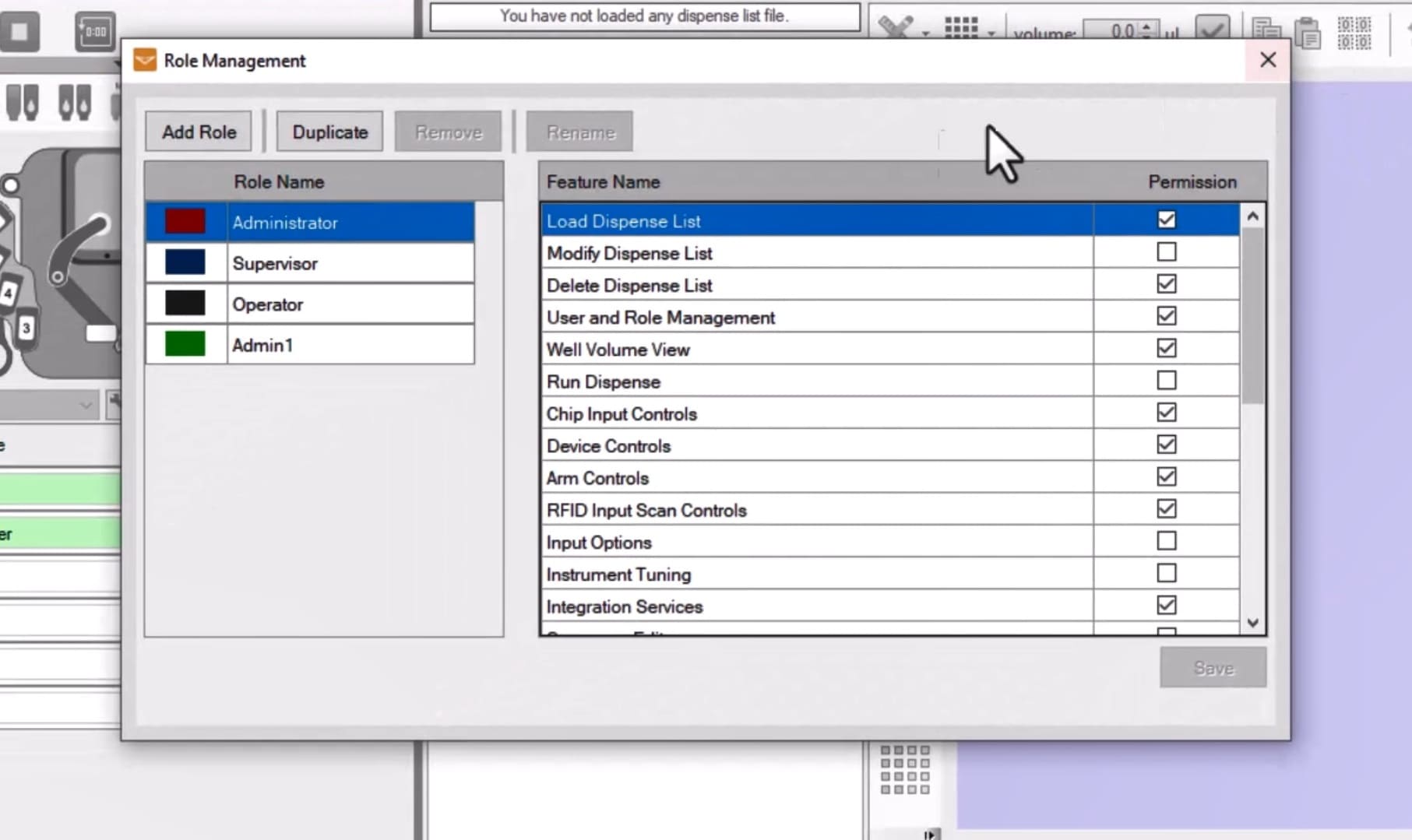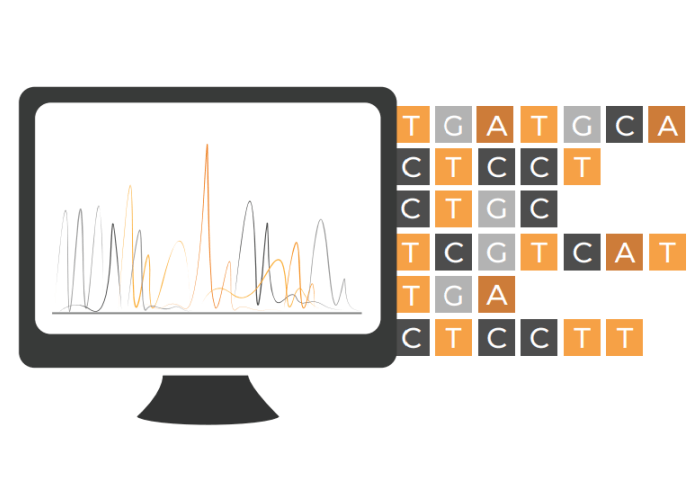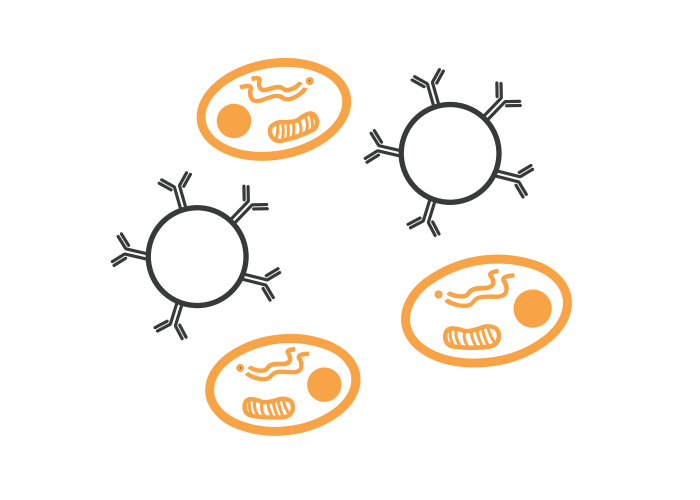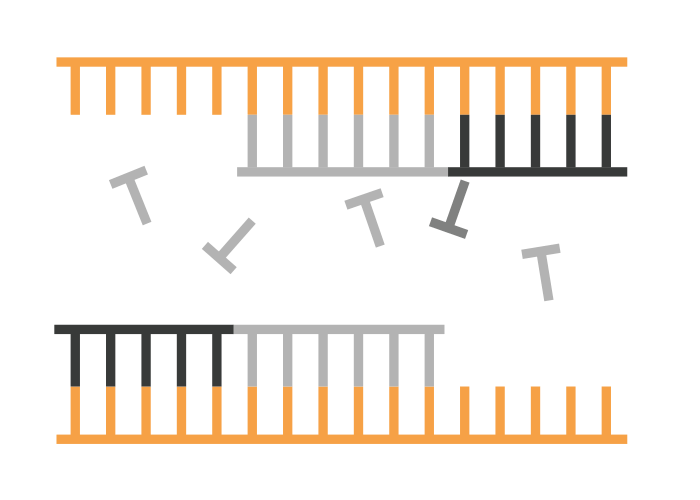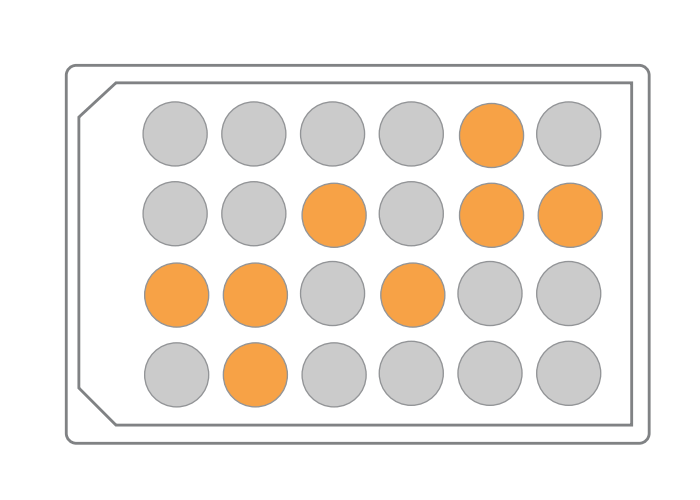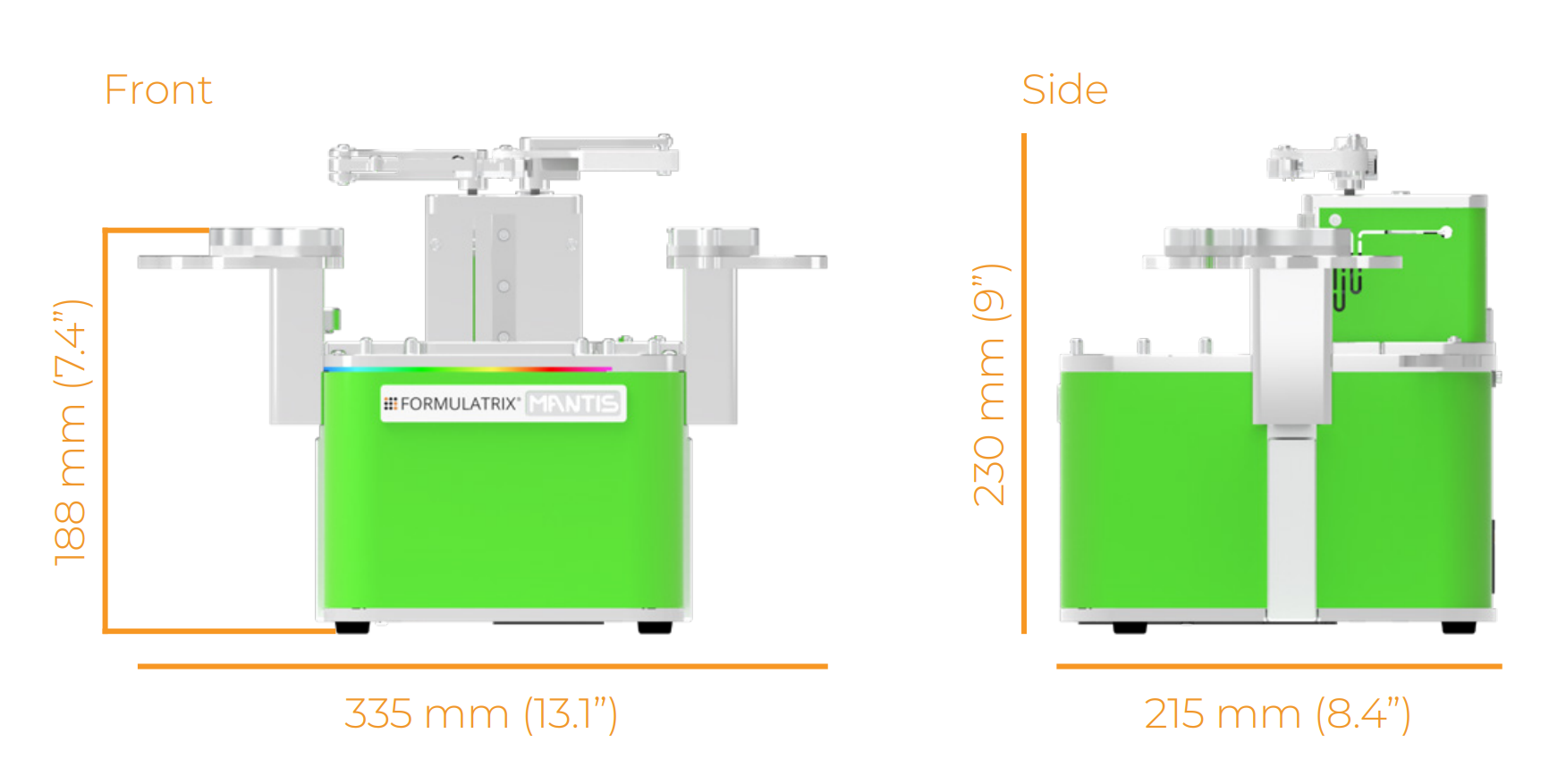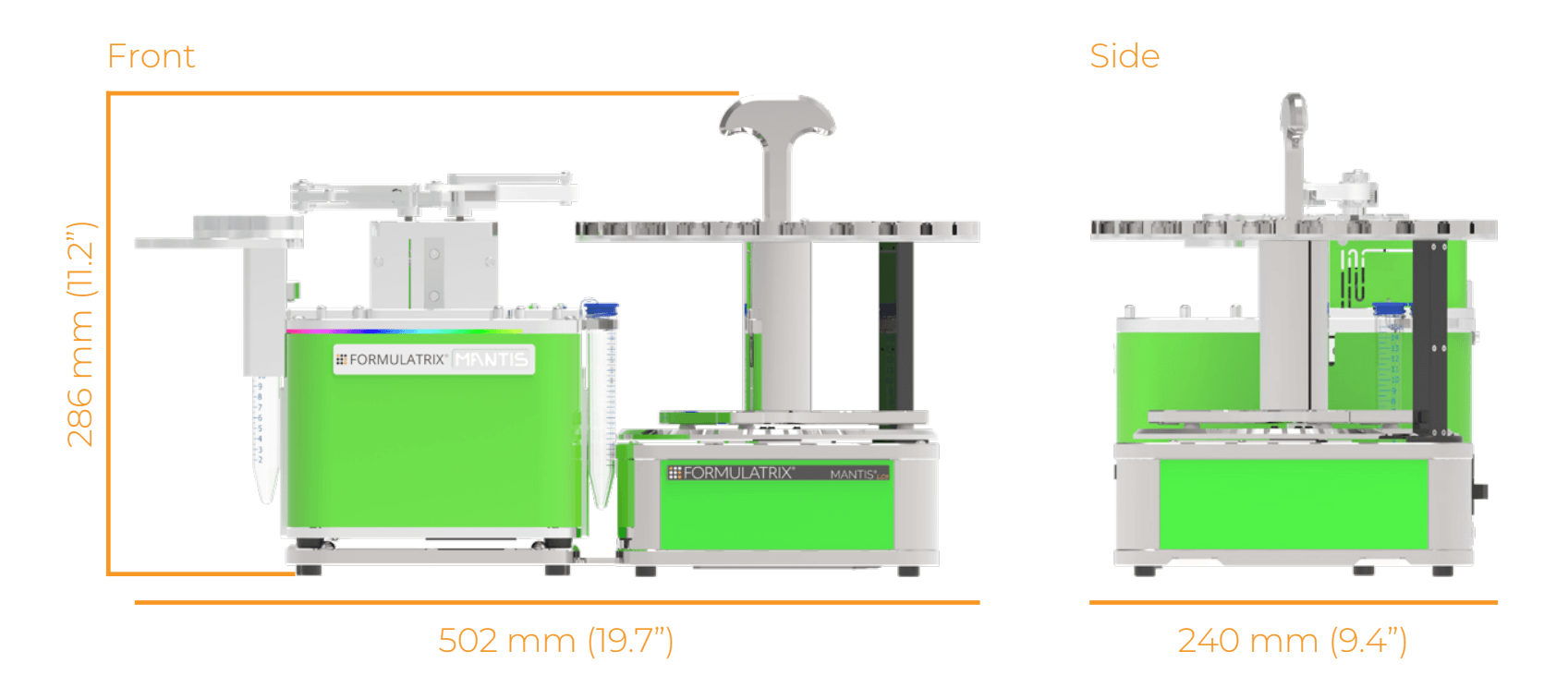Better Than Ever: Introducing the New MANTIS
What's new?
- Verify Every Dispense Run: the new Quality Control Droplet Detection Station verifies if drops were dispensed at the beginning and end of your run
- Know the Status of Your Dispense: the new LED Status Bar shows the status of your dispense at a glance
- Even Better Precision and Accuracy: the new High-Fidelity Chips allow for even tighter dispense parameters (<2% CVs at 100 nL)
- Tackle High Viscosity Reagents: the new High Viscosity Continuous Flow Chips can dispense thicker reagents than ever before
- Compatible with a Broader Range of Plates: the new Adaptable Plate Clamp is gentle enough to accommodate even thin-bottomed plates
- Define your Labware in Seconds: the new Interactive Labware Teaching module in the Mantis makes adding new labware a breeze
- Ensure Even More Uptime: the new Mantis features improved failsafes, including Automated Breach Detection, making it even more robust
- Seamless Operation in Regulatory Environments: the system now features optional 21 CFR Part 11 Capable Software
- Small Footprint: All these new features are packed within the same small footprint; Biosafety Cabinet Compatible
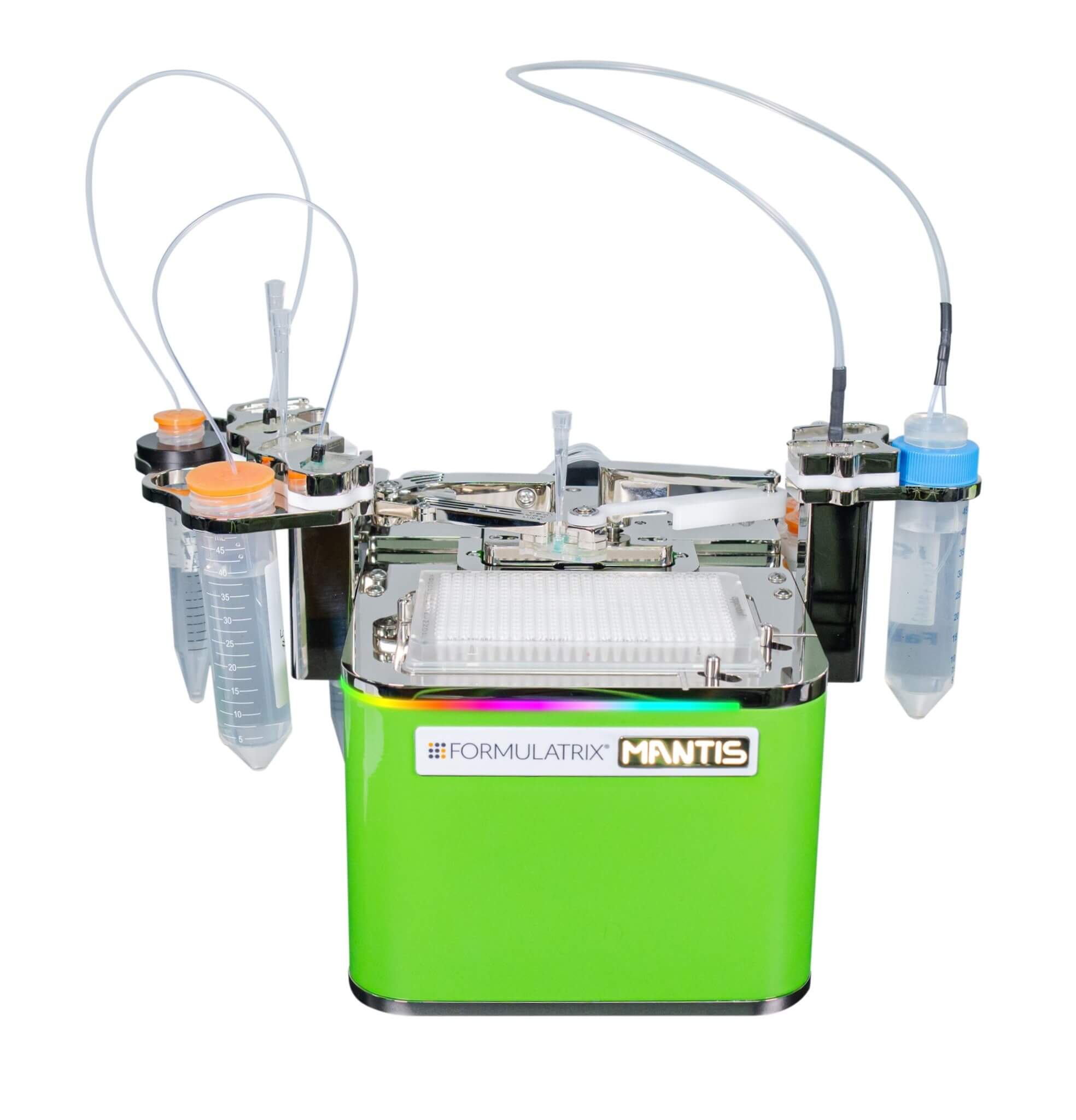
Reduce Costs
Save on Reagents and Consumables
Miniaturize reactions with tipless dispensing
Reproducible and Accurate
Enhanced Precision & Accuracy
Dispense volumes down to 100 nL at CV < 2%
Versatile and Flexible
Dispense and Normalize with Ease
Reagent dispensing for a broad range of applications
More Than a Reagent Dispenser
While traditional handheld pipettes or larger automated liquid dispensers greatly deteriorate in accuracy and precision below 2 µL volumes, the Mantis automated liquid dispenser excels at low-volume dispensing in a wide variety of scientific workflows.
The system is an easy and affordable solution to quickly increase the reproducibility and quality of your research as well as the throughput and efficiency of your laboratory. The diaphragm-based chip design is liquid class compatible, easily dispensing aqueous and organic solutions. Additionally, the Mantis will dispense in any SBS template from 6 to 1536 well plates and can be easily programmed to dispense to custom designs as needed.
Overview of the MANTIS
Benefits
- Efficient: Miniaturize
reactions, scale up throughput, save on reagents, and remove pipette tip cost - Reproducible: Dispense volumes down to 100 nL at CV < 2%
- RFID Sample Tracking: Implement RFID sample tracking for accurate and traceable results, ensuring data integrity
- Biosafety Cabinet Compatible: With its compact dimensions (350 mm x 232 mm x 212 mm), the Mantis can be used in various biosafety cabinets to accommodate workflows that require this level of safety
- CSV Templates: Seamlessly import CSV templates for quick and error-free experiment setup, streamlining workflows and reagent normalization
- Integration: Integrate effortlessly with external systems, fostering connectivity and data synchronization
- Intuitive UI: Experience an intuitive user interface for user-friendly operation, enhancing overall usability
- Reagent Compatible: (Mastermix, beads, buffer 70% glycerol, DMSO, etc)
Broad Range of Applications
- Assay Development and Design of Experiment (DoE)
- Next Generation Sequencing (NGS) - Library Preparation
- Polymerase Chain-reaction (PCR) Workflows Real-time and Digital
- Enzyme-Linked Immunosorbent Assays (ELISA)
- Cell Culture and Bead-Based Assays
- Scaling Up Organoid Cultures
- 3D Cell Culture
"Automated liquid dispensing is normally associated with big expensive equipment. Not so the Mantis. It combines speed and accuracy with an extremely small footprint and a relatively decent price tag. For us it has become an integral part of single cell processing and NGS applications. Handling is straight forward and intuitive and even my automation averse lab colleagues love to use it."
Wolfgang Breitwieser
Head of Molecular Biology
Large Capacity Chip Changer (LC3) Upgrade
- Allows up to 24 (single LC3) or 48 (dual LC3) chip capacity.
- Fully integrated into the Mantis software.
- RFID technology identifies all chips stored on the LC3.
- Offered with new Mantis instruments or as an upgrade for existing Mantises.
Enhance Laboratory Efficiency
Efficient research means that reagent dead volumes, tip consumption, and reaction volumes are minimized.
The Mantis liquid dispenser dispenses volumes from 100 nL to 100s of mL allowing researchers to commonly run 2-5 µL reaction volumes in genomics and screening workflows.
To minimize dead volume, reagents plug directly into the microfluidic chip. Dead volumes are further reduced to just 6 μL by using pipette tips as reagent reservoirs, making the Mantis ideal for dispensing even the most precious reagents.
Normalize Your Assay Plate, Quickly and Easily
- The Mantis software automatically calculates the normalization values for you
- The Continuous Flow (CF) chip bulk dispenses at >600 µL/sec, therefore, quickly normalizing each sample tube, well, and plate
- Even dispense high viscous solvents such as 100% glycerol using High Viscosity CF chip
Quickly normalize your assays with continuous flow dispensing
Mantis dispensing 100% glycerol
"Using Mantis, I recently performed a high-throughput qPCR-based drug screen in stem cell derived retinal cells and acquired reliable data with homogeneity, precision, and faster dispensing. The instrument is user-friendly and has easily paid for itself in the savings associated with both expensive reagents and tip consumption in our lab. The Mantis is an essential tool for any lab that wishes to perform the most efficient and reproducible genetic analysis.”

Srinivas R. Sripathi
Wilmer Eye Institute at the Johns Hopkins School of Medicine
Dispense Beads and Cells with Ease
Magnetic beads are an efficient means for extracting and purifying nucleic acids. Conventional pipetting may result in the non-uniform dispensing of mag beads, leading to a lack of reproducibility. The ability of the Mantis to precisely dispense high viscosity liquids allows uniform dosing of beads reducing operating costs and plastic waste.
Cells can be extremely sensitive, requiring additional care during handling, making the scalability of assays very challenging. The dispensing action of the Mantis liquid dispenser is gentle enough to dispense even the most delicate cells, such as primary neurons, while maintaining cell viability.
Use of Microfluidic Technology in MANTIS
At the core of our dispensers is patented microdiaphragm pump that meters and dispenses discrete volumes of liquid. This valve cluster can fill and dispense as fast as 10 times per second (exact speed depends on specific product). This proven technology is both incredibly precise and viscosity independent.
"FORMULATRIX is providing products that are state of the art in terms of fluidic and nanofluidic liquid handling. The technological excellence of these liquid handlers allows us to develop tailored scientific solutions that are extremely relevant for our collaborators' applications and workflows."
Highly Reproducible Data
Since liquid handling imprecision impacts experimental reproducibility, researchers consider CVs to be a vital factor when considering the automation of their research.
At the core of the Mantis' microfluidic dispensing chip is a valve cluster that measures and dispenses discrete volumes of liquid. This valve cluster has two micro-diaphragms (select either 100 nL and 500 nL or 1 μL and 5 μL) that can fill and dispense as rapidly as 10 times per second.
* = The coefficient of variation (CV) is the average of three independent microfluidic Chip readings.
"...[The Mantis liquid dispenser] helps us minimizes variation in sample prep. It is the most economical way to for us to reliably dispense sub-microliter volumes to each of our wells and help minimize our volumes..."

Ed Emmott
Research Associate
Versatility for Any and All Labs
The Mantis dispenses any reagent efficiently and reproducibly regardless of volume, viscosity, temperature, concentration, and research experience. It is no wonder that every year, more and more researchers discover and obtain the Mantis for dispensing reagents as a part of their diverse set of scientific workflows.
Miniaturize your cDNA synthesis and library preparation reactions, even with limited starting material.
Gentle and even distribution of suspension, adherent and 3D cell cultures.
Simplify the evolution from assay design to drug discovery.
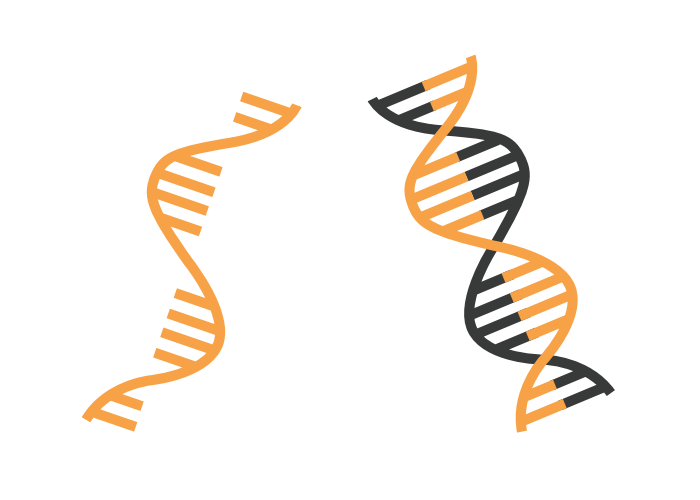
Nucleic Acid Workflows
Automate your nucleic acid extraction, recombination, and synthesis while avoiding cross-contamination and ensuring precision with the tipless technology of the Mantis
MANTIS ROI Calculator
Determine a Return on Investment for the Mantis system vs pipetting with disposable tips. Every lab is uniquely operated and, therefore, return on investment calculators are only as good as the information entered.
User Account Management System
The Mantis software allows seamless operation in regulatory environments including controlling user access and tracking user history. Our user management system will help you run your Mantis liquid dispenser in GLP, 21 CFR Part 11, or other regulatory environments by controlling user permissions and storing an official audit trail for your records.
Here are some key benefits of the Mantis 21 CFR Part 11 "capable" software:
User Account Management
- Restrict user access and instrument control by locally defined permission levels
- Lock users after failed login attempts
- Set and manage password requirements
- Archive old users, keep all user records
Secure Audit Trail Logging
- Date and time stamped user-action and instrument action records
- Full instrument and user-action electronic records are stored in a secure database
- Export log files to password-protected PDFs
- Selectively manage log elements included in your audit trails
- Audit trails maintained for the lifetime of the instrument
